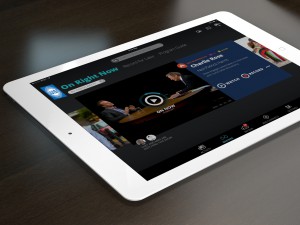
After more than 40 years of operation, DTVE is closing its doors and our website will no longer be updated daily. Thank you for all of your support.
WISI taps former Aereo technology for Project Katamaran OTT platform
 Cable technology provider WISI has used ANGA COM to launch Project Katamaran, a new multiscreen and OTT offering targeted a medium-sized operators looking to launch TV Everywhere services as well as other OTT providers. The offering is based on the acquisition earlier this year of the technology used to power the abortive Aereo service in the US.
Cable technology provider WISI has used ANGA COM to launch Project Katamaran, a new multiscreen and OTT offering targeted a medium-sized operators looking to launch TV Everywhere services as well as other OTT providers. The offering is based on the acquisition earlier this year of the technology used to power the abortive Aereo service in the US.
“We were hearing that people need a complete solution for OTT,” said Jeff Campbell, CEO of Inca Networks, the Vancouver-based company in which WISI acquired a majority stake last year. Campbell said that Project Katamaran would offer OTT as a complete cloud-based end-to-end offering or provide elements of it to operators that want to own their own infrastructure. “There is a lot of noise around OTT and and lot of companies only do one piece. People come to a trade show and do deals. But there is no alignment of business goals and technical functionality.”
Campbell said that combining the Aereo assets with WISI’s headend platforms enabled the company a full range of solutions that would enable operators to have full control of their own OTT and multiscreen services. Operators can start with a hosted service offering but then migrate to a fully controlled service in-house. “We can sell the infrastructure to them as they need it,” he said.
Campbell said that WISI’s deep relationships with long-term customers enabled the company to take a long-term view in helping independent operators develop their own OTT offerings.
WISI has hired John Pomeroy, previously VP of marketing and business development for ViXS Systems, as VP of multiscreen infrastructure to commercialise the project. “We have a complete offering. We have repurposed the [Aereo] assets in the package to target independent operators… We will build in industry standard APIs. The goal is we can offer an end-to-end solution or operators can have a partial solution and we can help them step up later,” said Pomeroy.
Project Katamaran’s use of the Aereo technology means that its OTT platform is based on a system that had over 100,000 paying customers in the US before it was closed down after its legal defeat over retransmission of content. “It is hard to find platforms with six-figure customer bases. They had built it for national deployment so there is no question it can scale. It is a micro-services architecture on the back-end, with [about] 50 micro-components that can talk to each other. It was up and running in 14 cities in parallel. It is a very proven platform,” said Campbell.
The end-to-end solution is being launched now although some customers are already employing elements of the platform. “We are seeing a number of different deployment models and we are still finalising the solution,” said Campbell.
He said that Project Katamaran’s primary target is independent operators in non-US markets, adding that the complexity of content rights restrictions in the US remain a barrier to entry for many potential players there.


